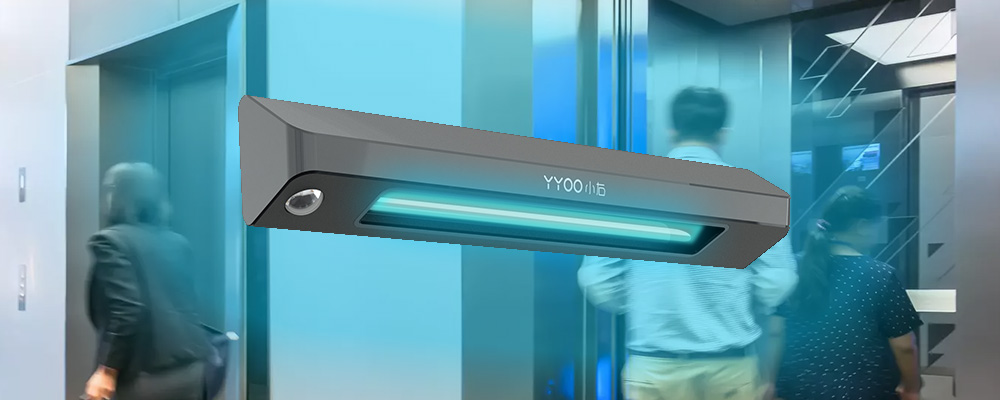Categories
New Blog
The Core Differences Between Household-, Commercial-, and Medical-Grade Disinfection Equipment
When purchasing various disinfection
appliances, we often encounter descriptions of equipment grades, such as
“commercial-grade disinfection appliance” or “medical-grade disinfection
product.” Because many buyers or consumers are not clear about the specific
meanings of these grades, they may blindly pursue higher sterilisation effects
when explaining their needs to professional disinfection device suppliers,
or mistakenly believe that “medical-grade” is always the best choice. As a
result, they may not only end up with equipment that isn’t suitable but also
incur unnecessary cost waste.
Taking three of our most common product
categories—household disinfection products, commercial-grade disinfection
products, and medical-grade disinfection products—as examples, you can see that
their design standards differ significantly due to their usage scenarios,
frequency of use, and the populations they serve.
Household Disinfection Equipment
Household-grade disinfection equipment is
used in home environments to disinfect everyday items such as tableware,
clothing, air, and small objects. Since the home is considered a low-risk
environment, these devices generally do not need to meet sterilisation
standards for highly resilient pathogens (e.g., spores). Their main focus is on
maintaining everyday hygiene and health.
Experts generally advise against frequent
use of high-intensity disinfection at home, as creating an overly sterile
environment may be detrimental to the normal development of infants’ and young
children’s immune systems.
Considering that family members may include
the older and children, and that most users lack professional training,
household disinfection devices are designed with an emphasis on ease of use and
the safety of the disinfection technology. They commonly employ human-friendly
technologies that do not produce harmful by-products, such as high-temperature
dish sterilising cabinets and ultraviolet air sterilising purifiers, and
typical disinfectants are chosen for easy rinsing, such as 75% ethanol or
household bleach.
Commercial-Grade Disinfection Equipment
Commercial-grade disinfection equipment is
used in public spaces with high foot traffic and complex environments, such as
shops, restaurants, malls, schools, offices, and activity centres. These venues
have higher bacterial and viral control needs, so the equipment must possess
more powerful sterilisation capabilities to cover a broader range of pathogens.
However, unlike medical settings, they do not require sterile-level
disinfection.
Moreover, commercial disinfection solutions
typically consume more power, incur higher operating costs, and often need to
run continuously for a long time to handle large volumes of items or expansive
areas. Therefore, their design must balance disinfection efficacy, durability,
and cost-effectiveness.
Because commercial equipment operation is
relatively complex, operators usually need technical training and must follow
standardised procedures. Technically, these devices often employ combined,
high-efficiency disinfection methods, such as high-temperature, high-pressure
steam sterilisation systems or multi-technology integrated systems (e.g., ozone
+ UVC + AOP).

Medical-Grade Disinfection Equipment
Medical-grade disinfection equipment is
intended for extremely high-risk healthcare environments and adheres to the
strictest standards of all disinfection devices. Its targets include a wide
range of bacterial and viral sources, and hospitals house many
immunocompromised patients, with medical staff frequently exposed to high-risk
pathogens.
Therefore, medical sterilisation equipment
must meet rigorous medical-grade disinfection standards—for example, achieving
≥ 6 log CFU inactivation of spores or ≥ 6 log high-level disinfection of
mycobacteria, following standards such as AAMI ST79 and ANSI/AAMI ST81.
To achieve these results, medical-grade
devices, in addition to using common technologies like ultraviolet, high-temp
steam and ozone, also employ more toxic or irritant disinfection methods, such
as VHP plasma, glutaraldehyde, or peracetic acid. For safety reasons, these
devices must be operated by professionally trained technicians under strict
procedural and certification oversight. Additionally, their procurement and
maintenance costs are significantly higher than those of other grades.
As the above analysis shows, each grade of
disinfection and cleaning equipment has its own clear application scope and
design focus. Blindly pursuing higher-grade disinfection capabilities will fail
to deliver better practical results but can also lead to wasted resources or
even safety risks.
We hope that this overview helps you,
whether you’re an entrepreneur preparing to partner with an ODM disinfection
equipment manufacturer or a consumer shopping for home products, to make a
more rational and scientific choice when selecting equipment.

Copyright © 2012-2025 Xiamen Atyou Health Technology Co., Ltd. All Rights Reserved.